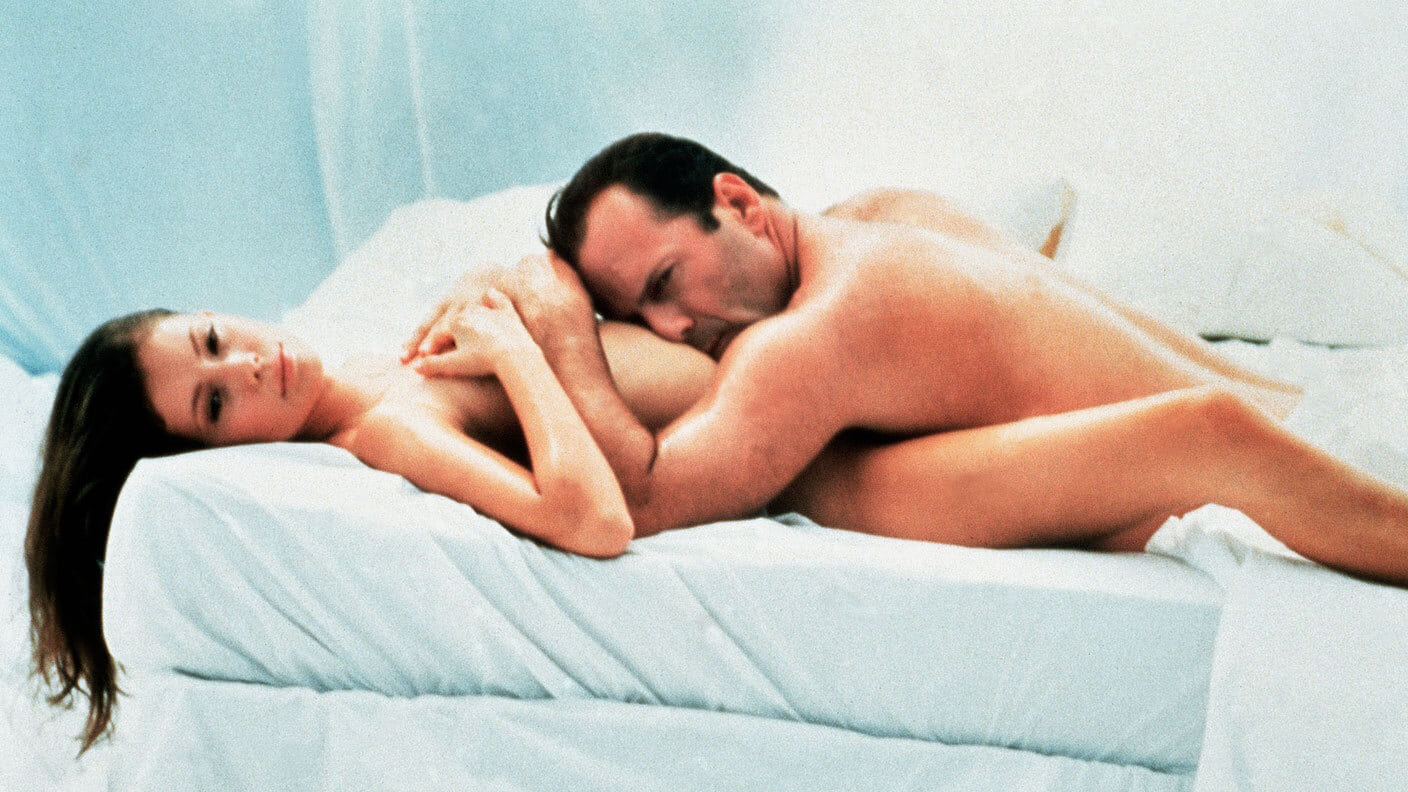
1994
Color of Night
Romance, Mystery, Thriller
6.0
User Score
605 Votes
Status
Released
Language
en
Budget
$40.000.000
Production
Cinergi Pictures, Hollywood Pictures
Overview
A color-blind psychiatrist is stalked by an unknown killer after taking over his murdered friend's therapy group and becomes embroiled in an intense affair with a mysterious woman who may be connected to the crime.
Review
merenabe
0.0
ust when you thought they'd never make a mystery thriller as deliriously bad as Midnight Lace, just when you imagined that the gold lame spirit of Douglas Sirk had departed forever, comes director Richard Rush's COLOR OF NIGHT to brighten up your dull evenings. Color of Night isn't just bad: it's bad with raisins in it.
If you were one of the few who saw Color of Night in a theater, you probably remember the plot, but for those millions and millions who missed this gem, let's recap.
Bruce Willis stars as a psychologist. (Are you laughing too hard or can we go on now?) Willis is having a crisis of conscience/ confidence because one of his patients leaped out of a window after applying lots of lipstick. (We all know, don't we, that applying lots of lipstick is a sure sign of suicidal depression?) Anyway, Willis goes out to L.A. to visit fellow shrink Scott Bakula, who takes Willis to his group therapy session so that the fun can start in earnest. Remember "The Bob Newhart Show" from the '70's? His group therapy meetings weren't nearly as funny as these: we have a nympho, an obsessive-compulsive, a split personality, the Professor and Mary Ann -- well, you get the idea. Bakula gets killed in a scene that looks like Psycho directed by Mack Sennett. The sad part is that Bakula is the most talented and attractive member of the whole goddamn cast and 30 minutes into the picture he's been bumped off.
Willis stays on in Bakula's grandiosely modern home (crammed with screamingly bad art) despite the fact that someone keeps stalking him and leaving snakes in the mailbox. (Are hotels in L.A. that expensive?) It's like the TV movie where that devil doll keeps chasing Karen Black around her apartment going, "Yanni yanni yanni," and it never occurs to her to just leave.Instead of ruining the horribly implausible and helter-skelter plot for you, We'll just point out some of the more outrageous lapses of sanity: a) Willis's patient jumps out of a Manhattan office tower, causing pedestrians to scream and run, whereas real New Yorkers would have lifted her purse; b) Three days after famous psychologist Scott Bakula is killed in an exceedingly colorful way in his midtown office, his patients still don't know about it -- okay, we've already established that there are no reasonably priced hotels in L.A., but surely there must be at least one newspaper or TV station; c) The whole plot hook -- Willis goes color blind after seeing his patient's blood -- goes nowhere. Period. You keep thinking there has to be a reason for it or a plot twist that depends on it -- but nothing ever happens.
The film is a laugh riot and we don't want to give away all of the jokes. When we saw the film in the theater, the audience laughed all the way through the first sex scene, which took place underwater and was about as erotic as an Esther Williams movie. Oh, yes, we do get to see generous portions of Bruce Willis, though not as much as he'd have liked.
Then there's the acting. Even the extras overact. Keep your eyes out for one unbilled woman playing a hooker in a police station. She only has one line, but she gives it such gusto that she will leave you stunned. Even formerly respected actors lose all sense of self-control; Lesley Ann Warren (decked out in a Shelley Long wig) twitches and twitters like a road company Billie Burke, and Ruben Blades does what appears to be a Jose Jimenez imitation. Willis actually seems like a model of intelligent understatement compared with the rest of the cast, but the truth is, he just wasn't acting at all.
And then there's Jane March. Ever so much of Jane March. Watching her try to match wits with Bruce Willis really makes you appreciate the bang-up job Cybill Shepherd was doing all those years. Jane spends half the movie dressed in disguise as a teenage boy. (How hard is she to spot? She's got teeth like Bucky Beaver! This gal could eat corn on the cob through a picket fence!) It all just gets sillier and sillier until the grand finale, which tried to come off as Hitchcockian but reminded us more of silent film legend Harold Lloyd. Judging by the guffaws from the audience, we weren't alone. So, watch Color of Night if you're feeling down in the mouth. Just don't try to eat popcorn during it -- unless you know the Heimlich maneuver.
Read More tmdb28039023
4.0
Rare is the movie that benefits from addition. Color of Night is almost but not quite the exception that proves the rule. According to TV Tropes, “The director’s cut [which runs 20 minutes longer than the theatrical release] restored … much of the film’s humor.” Not nearly enough of it, though; if the movie had truly embraced its comedic potential, it could have been the Naked Gun of erotic thrillers.
Less than three minutes after he has been accused of being figuratively colorblind, psychologist Bill Capa (Bruce Willis) goes literally colorblind. To call this foreshadowing is an insult to prefixes. Bill loses the ability to see the color red when one of his patients defenestrates herself (the dummy that takes the fall is so stiff it looks like it might start gliding away at any second).
When the woman crash-lands on the street, we are treated to a shot of her bleeding face — from below; it’s sort of like the Sunset Boulevard pool shot only instead of looking through water, we are somehow looking through pavement.
A distraught Bill goes to visit his colleague and best friend Bob Moore (Scott Bakula) in Los Angeles. Bob invites Bill to sit in on a group therapy session, where one of the patients notices with amusement that Bill is wearing one red sock and one green sock — which of course looks only slightly more ridiculous than if either color actually matched.
Bob is soon stabbed to death in a scene that wouldn’t be entirely out of place in the first Scary Movie, and that culminates with Bob crashing through a glass door — well, he actually doesn’t so much crash through it as leans gently on it, at which point the door collapses like it was made of sugar glass as opposed to glass-glass, except for one particular shard that’s bigger and sturdier than the rest; so much so, in fact, that poor Bob can’t help impaling himself on it.
All five members of Bob’s therapy group are suspects, though sadly only two are blatant red herrings. Now, if the film had taken itself much less seriously, a joke about Bill’s inability to detect a red herring would have written itself; it would also have been funny if the entire group were composed of Usual Suspects (why not, for example, Ted Levine and Tom Noonan to complement Brad Dourif and Lance Henriksen?).
Bill takes over Bob’s duties and in the process becomes the subject of a couple of unintentionally hilarious assassination attempts, including a rare Car Fu/Fallacy of the Predictable Tree hybrid — and who could forget the ol’ Rattlesnake in the Mailbox?
As for the intercourse scenes, the norm is that you couldn’t make sex funny if you tried; then again, director Richard Rush wasn’t trying, and that’s how come we get, among other things, a toy tank used as a sex toy (doubly weird because this occurs in a bathtub, so shouldn’t it be a toy boat?), and a scene in which, even though he’s off-screen, you can hear (and then can never, ever un-hear) the exact moment when Bill grunts his way to climax.
Oh, and there’s also a sardonically wisecracking homicide detective played by Rubén Blades who, in a moment of self-awareness bordering on self-parody, mercilessly mocks the other characters for being so dumb (“How in the name of God could all of you be going out with the same woman and not know? Not have a clue? … I’m gonna call the Guinness Book of World Records because I think this woman deserves credit. And I’m gonna make sure that all of your names are included so you can all share in the glory”). That’s precisely what this movie needed; more Hudson Hawk and less Striking Distance.
Read More 



